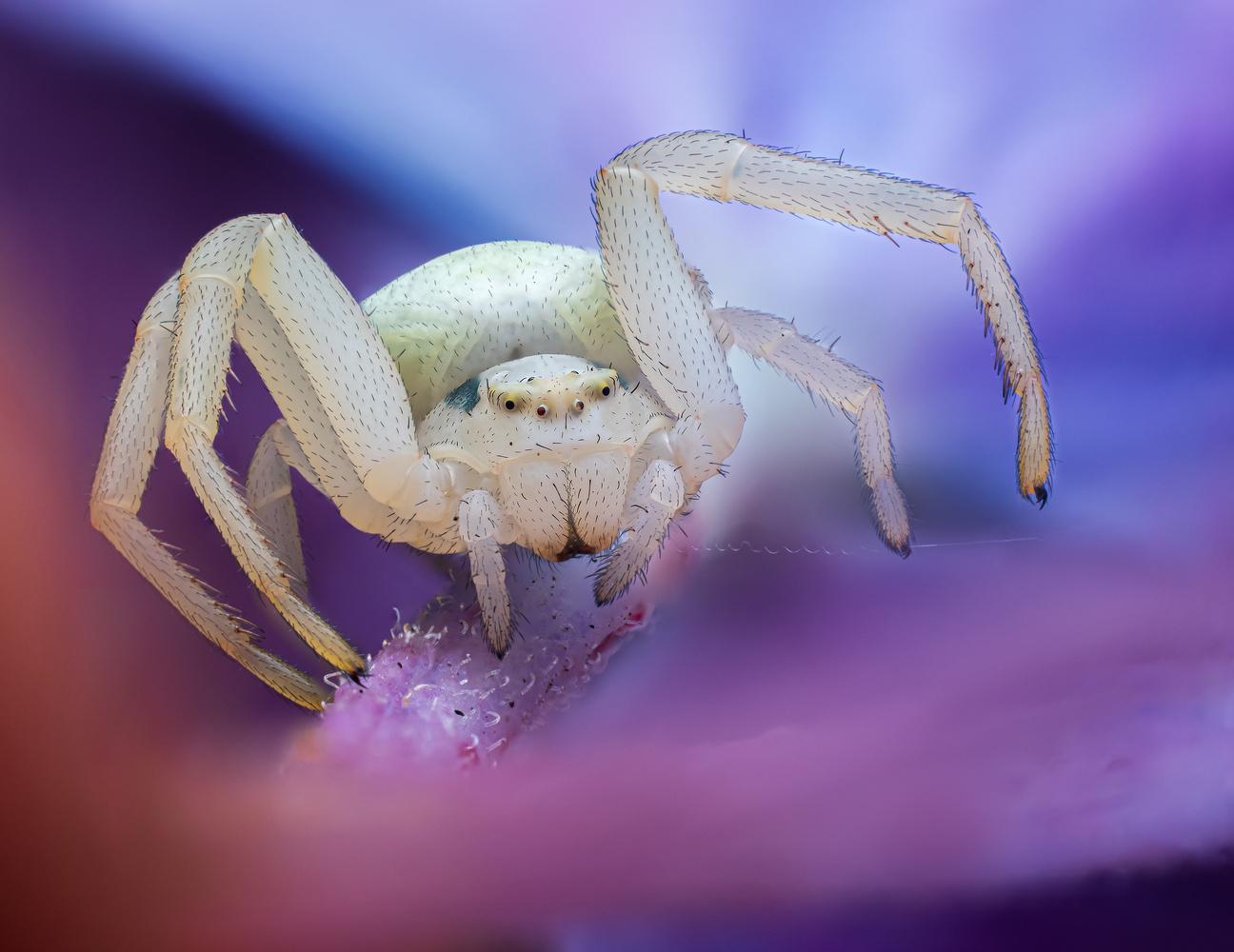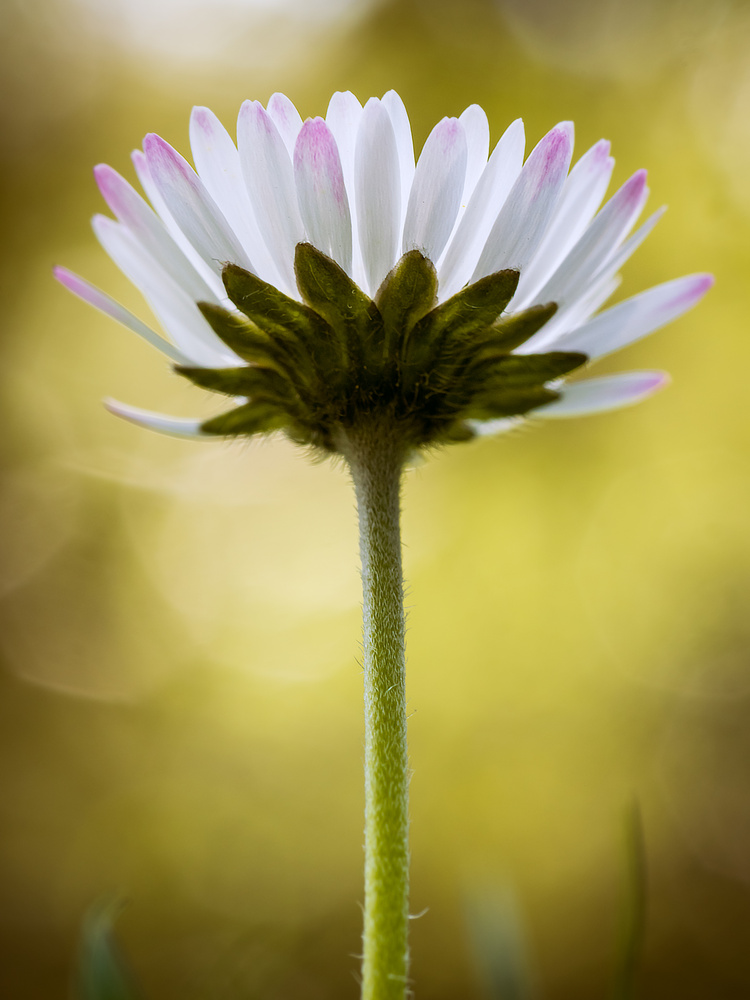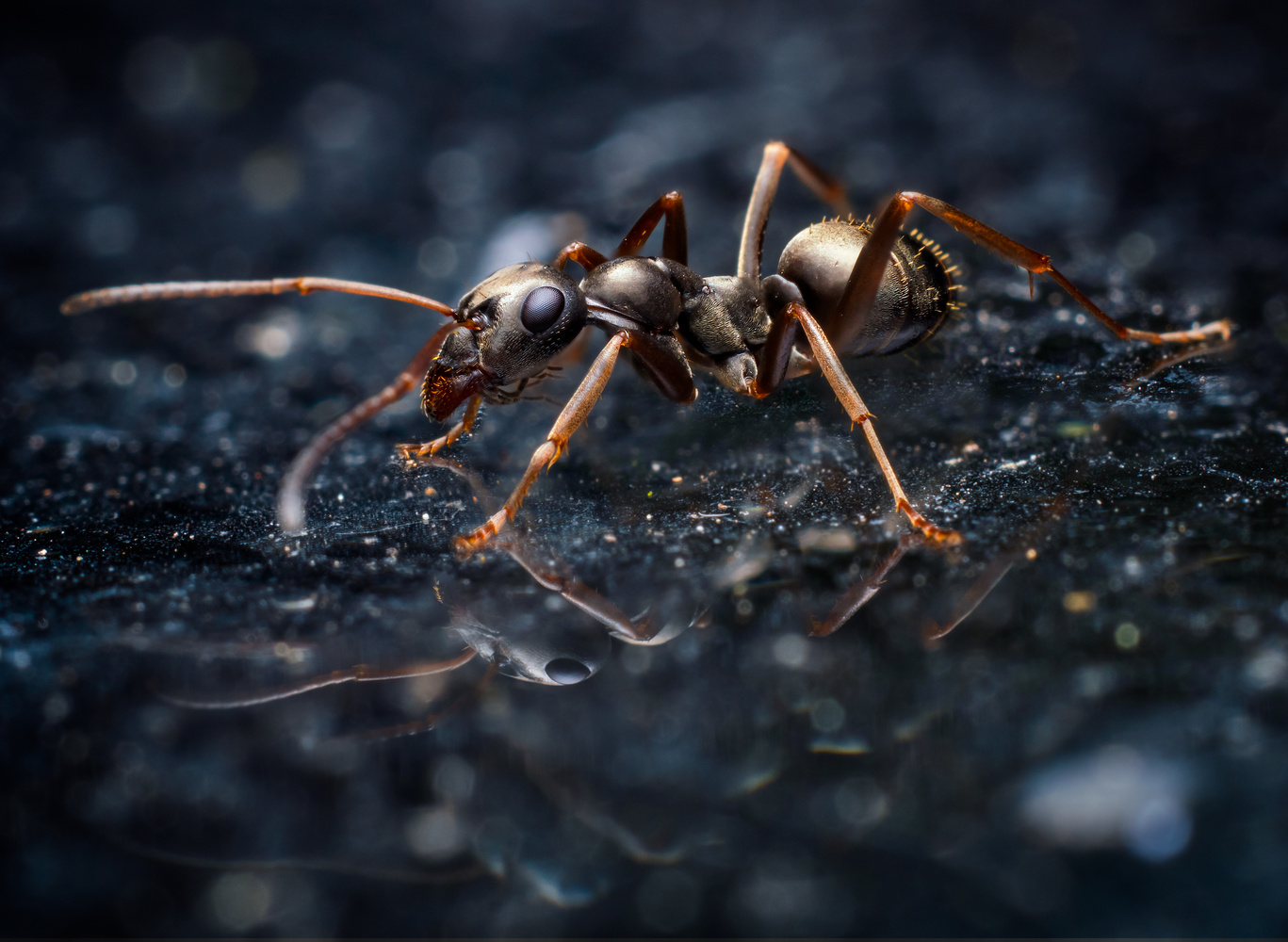Did your university lecturer radiate an aura of excitement while crawling through a damp forest, seeking subjects that most of us would not notice? Every school and college should have a Geraint Radford. His skill and enthusiasm have just made me want to buy a macro lens and try the techniques I learned while interviewing him.
Like many photographers, Geraint got hooked on nature as a child. He grew up in the mid-90s and didn't have as much technology available as young people do today. Grateful that much of his childhood was spent exploring and looking at bugs in his garden, he's still doing the same stuff, now with a camera in his hand 20-plus years later.

We chatted on Zoom, at first, a little bit about music: we both had guitars in the background of our shots. Geraint's a rocker. When I first met him at the UK's Photography Show at the Birmingham NEC—a huge music venue — a couple of years ago. He jokingly started his presentation with "Hello, Birmingham!" like a rock star. Always quick with a joke, that sense of fun shone through during our chat.

Photography came into his life about ten years ago. He was a dog groomer and walked a lot of dogs. He bought himself a camera, and that started him on his road to the massive success and popularity he has now. His first camera was a Nikon D80 with a Sigma 70-300mm lens. Being new to photography at the time, he didn't realize that you needed a different lens for photographing the tiny creatures that appealed to him, so he groomed and walked many more dogs, earning enough to buy a macro lens.

The Sigma had a macro function on it, and in many ways, they are a lot more versatile than actual macro lenses. They are 300mm long and you can photograph butterflies with them, about ten miles away!
It was the mini-beasts that he photographs that grabbed his attention as a child. He is now reading about them too, trying to know more about those little creatures. He told me of his affinity for slugs and snails.
They are quirky little things. My gran used to hate them for smashing up her lettuces. But it’s collateral damage; they are cute.

He recently moved house and has a garden that he is rewilding. Now, he's not so keen on the gastropods attacking lettuces, and we digressed for a while talked briefly about planting nasturtiums as sacrificial plants to attract those invertebrates.

Geraint made his way up through the Nikon range, through the D7000, then the D3S, and the D5 before leaving the system. I asked him why he switched from Nikon to what was Olympus, now the OM System. He said that happened when he met wildlife photographer Rob Cottle; they work together for their educational photography YouTube channel. They were both attending a seminar run by wildlife and aviation photographer Andy Rouse. Back then, Geraint's focus was on larger wildlife. He had his Nikon cameras and his "massive 200-400mm f/4" lens.

Rob and I would go out, and we would be hiking. I’d be in an absolute sweat, lugging this stuff around, and Rob was fine. He won’t mind me saying that he’s got a few years on me, and it shouldn’t have been that way. So I said: ‘Okay Rob, let me have a look at that camera you use.’
That was an Olympus OM-D E-M1 Mark II. So, he contacted Clare Harvey-May at Olympus and she set up a pro-loan for him.

Clare sent me the camera, and I fell in love with it. It was awesome, so I traded in all my stuff on eBay.
I asked Geraint if he was a bit of a "techy," as all the extra functions in the OM System kit appeals to the technically minded. He told me he used to be, but not so much anymore. But even now, there is stuff he's discovering within the menus. However, he's trying to develop a more creative side to his photography, something that I have noticed in the photographs he has published recently. He said that a lot of his previous work was very technical, which was coming across in his images.

Lots of my insect shots were as close as you can get, with focus stacking. But I didn’t see a lot of artistry in there. So, I am trying to develop that side of my shooting lately. A lot of that includes photographing the subjects in their environment, using the shallow depth of field, and not being stacking obsessed.
He takes photographs with a narrative, admitting that it is easier said than done, especially in the macro field.

Anyone who has dabbled in macro will know the shallow depth of field and maintaining focus are big challenges. Geraint has perfected this shooting handheld. The tiny subjects he's shooting, like springtails and minuscule mushrooms, he achieves by manually focussing and pushing and pulling the camera back and forth. He says he misses a lot of photos, but has a big grin when he mentions his successes. When he looks at the missed photos, he isn't disheartened, but sees them as an incentive to get it right next time.

I have seen Geriant on video using flash, and so, I assumed he was shooting one frame at a time, as opposed to continuous shooting that some macro photographers resort to. But he said that with flashes like the FL-900R or something from the FL-700 series, they recycle quickly, so are great for focus stacking. But for the single shots, he must anticipate the creature doing something or going somewhere. Then he holds the camera still, focussing on a single point. He says you don't want to take too many shots because if the action happens in that split second between frames, you will miss the shot.

99% of the time, you are going to miss it. But when you get it, it’s really cool.
The OM System cameras, of course, have the Pro Capture feature that is buffering images before the shutter button is fully depressed. Still, I get the impression that achieving the shot through understanding the creature's behavior is more important to Geraint.

Geraint told me he had photo-stacked a tiny little mushroom and was waiting for a springtail to move into the shot. That happened about thirty seconds later. That would have been impossible to shoot in one photograph but, because of the necessary techniques to get the shot. Whether it would be accepted or win a photography competition because of the 30 seconds gap between taking the single shot and the photo-stack of the mushroom is debatable.

It’s working within the limitations. I’m not going to get it in one photograph. But I’m not going to, because of rules or pride, just let it go. I’m going to adapt and use the advancements we have to get those photographs that we see in here. As our skill develops and the technology advances, it allows us to show the world we love in the way that we see it.

I mentioned that many people using other systems face the issue with macro focus stacking in that as they manually refocus with a zoom lens, the focal length of the lens changes. Geraint recommends locking the camera to manual focus after composing the shot and pushing the camera slightly between each frame.
Then, just blend them as you would usually do.

Geraint's looking forward to the new OM System 90mm PRO macro lens that is on the horizon. Not all the details have been released yet, but he does have expectations for it. It has been announced that the lens will have a four times magnification. His current Olympus 60 mm f/2.8 Macro lens has a two-times magnification. Consequently, he will be further away and the subject will be magnified twice as much as before.
I was nearly fainting with excitement when I heard about that; I won’t need to add extension tubes to gain that magnification. The entire system will be weather sealed... and it’s pro-level too, so the images will be super sharp. There’s lots to be excited about.

When it arrives, the new 90 mm lens will help Geraint to photograph things that he struggles to photograph now, like small lizards where he has to get very close, which is problematic because they are skittish and fast-moving.
You have to get really close to them. They are either going to see you and [because] they are hot and active, they will leave, or I will block out the light. Having that extra focal length is going to open up everything. I’ve got big plans for that.

Geraint is moving into creating macro movies. He has already been working on some with the 60 mm macro lens, but he feels the extra focal length of 90mm will be much better for that work. Although it isn't a feature that's been announced, he's expecting the 90mm lens to be steadier than the current lenses and have built-in image stabilization that will synchronize with the in-body stabilization of his OM-1 camera. He crosses the fingers of both hands as he says this. He's visibly excited by the prospect.

When I talked about the fantastic but very different macro work of Ethan Beckler, Geraint told me he cannot work indoors. He finds more joy in being outside and loves being in nature. The photography is secondary to that.
He posts online solely to get other people to do the same: exploring nature and the macro world. He feels that social media he is involved with has changed dramatically recently, something I had noticed too, especially with the OM Systems feeds. He says it used to be about self-promotion, but now it is about getting other people to take photos.

They have a big community and celebrate their camera users. Their social media feeds are mostly filled with [photos from] people who use their kit. And I love that. A lot of times you see things from the pros and the upper echelons, but there’s an amazing skill level out there and we otherwise just don’t see it. I love how democratized photography is becoming. It’s amazing and the advent of camera phones is a massive help because people are just used to snapping away now.
He says that if you want quality and big prints, then that democratization draws more people in, and it's good for those of us who run workshops off the back of that.

Running photography workshops is a great passion of his. Geraint is always quick with a joke, and his enthusiasm for photography and his excitement must be a boon for his students at Carmarthen University, which has a long history and a great reputation for photography.
He finds teaching others hugely rewarding and loves being able to pass on his knowledge to the students.

Ethical values in photography are important to Geraint. We talked about how those beliefs fit with his photography. He says he is inspired by the work of Ross Hoddinott, who is a great voice for the insect world. Like Geraint, he won't trap the insects or refrigerate or freeze them as some people will. Neither will Geraint pick up an insect and place it elsewhere just to get the shot. Like other top wildlife photographers, he won't do anything to help promote those who use bad practices to get their pictures.
As soon as I see them doing it on social [media], I’m gone. I’m cutthroat like that. I don’t want to even see it. I don’t care who they are. It puts me in a bad mood when I see it. I think I can do it without it. Ross Hoddinott is a big name in photography, and he does it without it. So, there is no excuse. It’s just vanity, and content engagement drives that kind of behavior.”

We talked about the wider ethical issues, such as using bait to attract animals and playing recordings of territorial bird songs to draw other birds near. Geraint said he could cut some slack for those professionals who get paid for that one shot, because they probably have mortgages to pay. Maybe, sometimes, the photo is shot for its scientific value. But those photographers invariably use the best practices possible.

I’ve seen some incredible images where they haven’t done that. There is a difference between wildlife photographers and people with cameras. Wildlife photographers do it to celebrate their subject and they don’t do it at all costs. There is a reason why some are still here, and others don’t go anywhere. The industry knows.
Geraint is diversifying into videography, including The Outsiders YouTube project that he and Rob Cottle are working on together. If you haven't seen them, it is a channel worth following. They are a hoot. He enjoys filming larger wildlife more than taking stills, and we will undoubtedly see some macro videos appearing soon.

Geraint's photography is online on Instagram, Facebook, and his website, as well as on his new YouTube Channel with Rob Cottle.







WHAT!?!? These are incredible! The insects seem to have such fun, curious little personalities. The sharpness and detail is just mind-blowing. I love these. Thanks for sharing!
It's all the more incredible that they are all handheld. I've watched some of his reels and he spots stuff I would never see or have steady enough hands to shoot.
Agree with Michelle, really stunning photos!
Yup, he's one talented photographer.